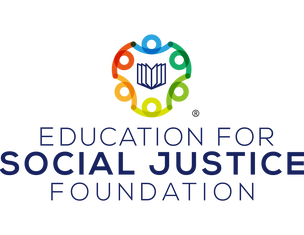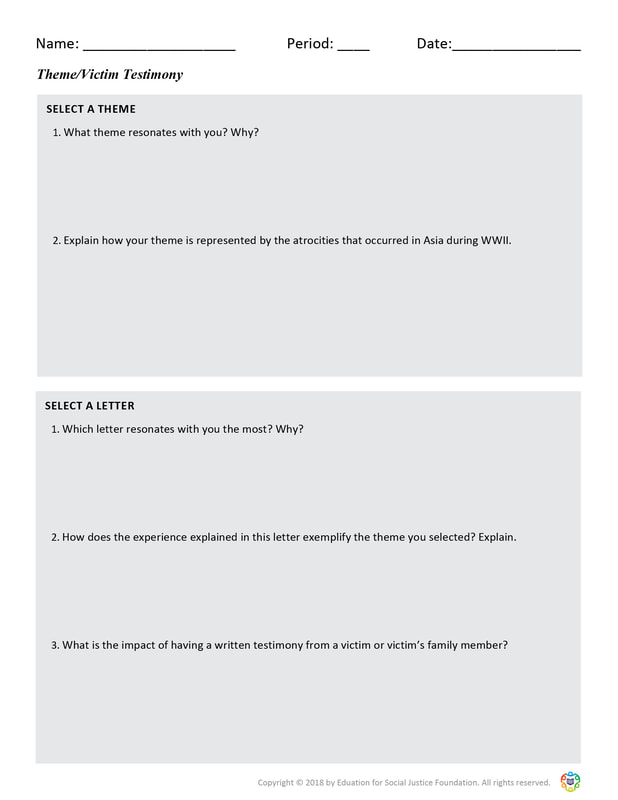Breaking the Silence and Stepping Forward for Justice
Purpose: To provide a background of atrocities committed and why war crimes went unpunished, allowing students to learn and analyze common themes, the impact of war from the accounts of victims, and see individual efforts towards finding justice.
Objective: Students will examine first-hand accounts (letters) of victims of WWII in order to analyze how common literary/historical themes (e.g. “war”, “good vs. evil” etc.) apply to lived experiences.
CA H-SS Framework Standard: 11.7 America’s Participation in WWII - How was the war mobilized and fought differently in the Atlantic versus the Pacific? How did America win the war in the Pacific? How did World War II serve to advance movements for equality at home and abroad?
Suggested Time: 1-2 class days
Procedure:
Materials:
[1] 10000 Cries for Justice began with the work of Tong Zeng, a nominee for the Nobel Peace Prize. Tong Zeng sought compensation from the Japanese government for wartime victims, resulting in an outpouring of letters from victims and victim’s family members.
Objective: Students will examine first-hand accounts (letters) of victims of WWII in order to analyze how common literary/historical themes (e.g. “war”, “good vs. evil” etc.) apply to lived experiences.
CA H-SS Framework Standard: 11.7 America’s Participation in WWII - How was the war mobilized and fought differently in the Atlantic versus the Pacific? How did America win the war in the Pacific? How did World War II serve to advance movements for equality at home and abroad?
Suggested Time: 1-2 class days
Procedure:
- Teachers should introduce students to common themes (e.g. good versus evil, war and peace, survival etc.).
- Teachers introduce students to WWII in Asia by providing the short read or create a presentation. The reading provides background information and four major offenses committed during WWII in Asia.
- “Comfort Women”
- The Nanjing Massacre
- Unit 731
- Slave Labor
- Introduce students to 10000 Cries For Justice (CFJ).
- Provide students with translated letters. Students will use the sequence number to find the original letter at www.10000cfj.org
Materials:
- Japanese Atrocities in Asia by New Jersey Hong Kong Network Reading
- Copy of translated letters
- www.10000cfj.org[1]
[1] 10000 Cries for Justice began with the work of Tong Zeng, a nominee for the Nobel Peace Prize. Tong Zeng sought compensation from the Japanese government for wartime victims, resulting in an outpouring of letters from victims and victim’s family members.
Copyright Ⓒ 2018 by Education for Social Justice Foundation. All rights reserved.


